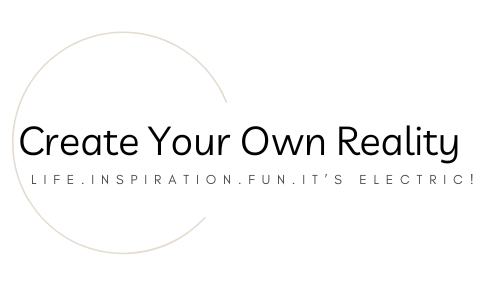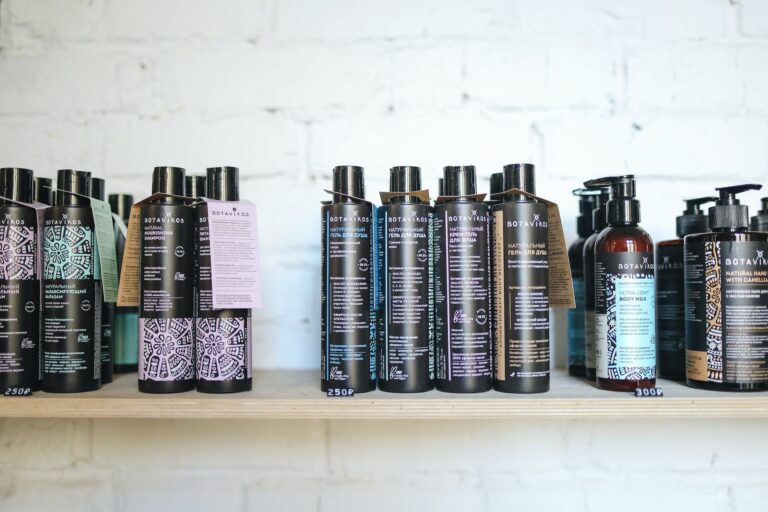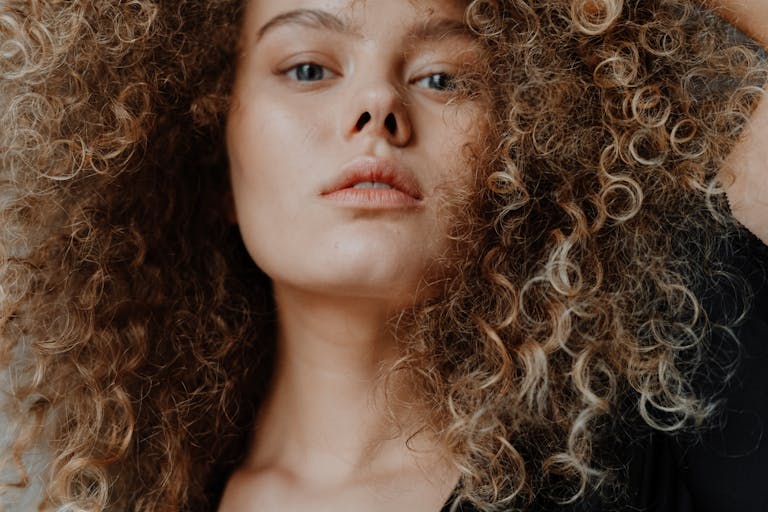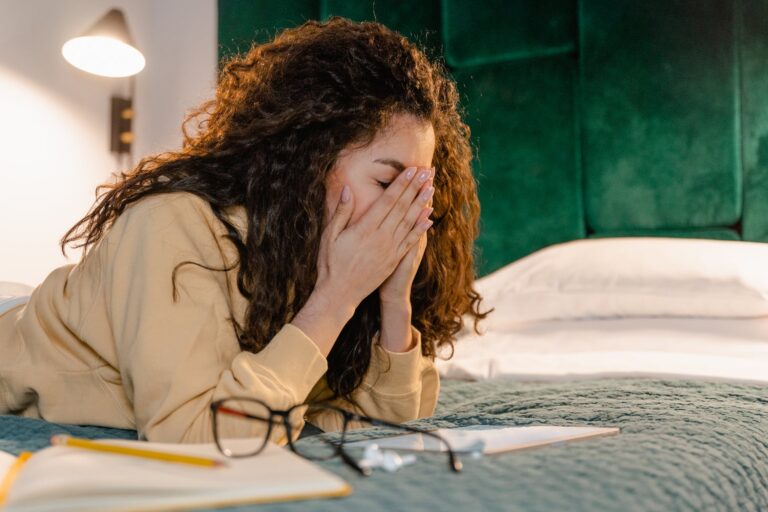How to Cut Your Own Curly Hair

Today, we’re going to talk about how to cut your own curly hair!
I’ve tried a few different techniques in the past couple years, and I’ve finally landed on one a favorite that I’ll be revisiting for the foreseeable future.
This post is going to get into dry cut vs wet cut, my preferred method, and how to actuall go through the process of cutting your own curly hair.
This page does contain affiliate links, which means if you purchase something using the product links on this page, I may get a small commission. This comes at no extra cost to you and helps keep this site running. Thank you!
Additionally, I am not a hair professional. I am simply someone with curly hair who has done a lot research and is sharing my own experience. My results may be different from yours. If you decide to attempt to cut your own hair, you do so at your own risk.
Why you may want to cut your own hair
First, lets just take a moment to discuss why you may (or may not) want to cut your own hair.
You may want to cut your own hair if your hair is long enough for you to see the ends, you’re looking to do something simple (like just trim and add layers), or if you’re looking to save some money. (A good curly hair cut can be a bit pricey.)
You may also want to cut your own hair if you’ve has your fair share of bad curly cuts and you don’t feel like you really trust anyone else with your hair right now.
On the other hand, if you have a very specific cut you want, your hair is too short for you to see the ends to cut it, or you need signifigant shaping, you’re probably better off leaving this in the hands of a professional.
However, doing your research and finding a curly hair/textured hair specialist is going to be important. Not all stylists are educated in cutting curls. If you get someone who doesn’t know what they’re doing, your hair will likely reflect that.
Tools

Here are the tools you’ll need to cut your own curly hair. You may not need all of these tools. It’ll depend on which cut option you choose.
- Hair cutting scissors (These are the set I use. They’re affordable and have gotten good reviews from hair professionals.)
- Large claw clips
- Small claw slips
- A comb
- Hair ties
- A spray bottle (for a wet cut)
Dry Cut
A lot of the info for this section is coming from the Curly Girl Handbook by Lorriane Massey and this video from Manes by Mell, who is a hair professional and textured hair specialist.
Why you might want a dry cut
A dry cut might be a good place to start if you’re cutting your own hair for the first time and you’re a little uncertian about it.
It was where I started when I was cutting my own hair.
A dry cut is best for when you’re really only looking to trim your hair and you’re less interested in reshaping it. Maybe you like your general length and shape, but you’ve noticed some dead ends and want to clean your hair up.
It’s difficult to do too much damage with a dry cut because you’re only trimming the ends, and you can mostly see the overall shape and look as you cut.
One of the down sides of a dry cut is that it can result in uneven hair.
This isn’t that big of a deal if you’re strict about not using heat on your hair. But if you’re known to straighten your hair on occasion, the unevenness is likely to show.
How to dry cut
Start with your hair styled as you usually wear it.
I like to section my hair into quarters and clip 3 quarters up so I only focus on one quarter at a time.
I find this makes it easier to determine what I’ve cut and what I haven’t, but you don’t have to do this if you don’t want to.
Next, go curl by curl and cut off the very end.
Move the curl clump in front of your face so you can see it, then snip off the dead/split end. Then move to the next curl.

Repeat this process for every curl clump on your head until all of your split ends have been cut off.
For a more detailed breakdown of this process, check out the Curly Girl Handbook. There’s a whole chapter dedicated to this.
My experience doing a dry cut
The first two or three hair cuts I gave myself were dry cuts. I had no issues with it, and I was always more or less happy with the result.
However, going curl by curl takes a lot of time. It also doesn’t do much to shape your hair. So after a few cuts like this I decided I want to try other options.
I expeimented with a few wet cuts and found one I really love. It takes less time and gives me more shape and layering.

Wet Cut
You may want to do a wet cut if you, like me, are looking for something that takes a little less time, and gives you more shape and laying.
I’ve found Manes by Mell to be a great resource for cutting your own curly hair.
The first time I tried a wet cut, my hair wasn’t as long as it is now, so I tried Mell’s pigtail cut, which she demos in this video. It’s designed for more shouder length hair. (If you’re hair is shoulder length, this is the cut for your! Check out Mell’s video to learn how to do it!)
And while my hair wasn’t as long as it is now, it was also a little too long for this cut. It worked out fine enough, but I wouldn’t recommend if you can successfully gather all of your hair at the crown of your head.
Intead, I’d recommend Mell’s varation on the unicorn cut, which is what I’m going to to be breaking down for you in the rest of this post. You can see her video demo of this here.
I chose this cut because my hair is longer and I wanted to add shape and layering without taking off too much length.
I’d recommend watching the video for a more detailed explination, but here’s how I implement this cut on myself.
Prep the hair
Wash and condition your hair. Then add some leave in conditioner to give your hair some slip.
Throughout the course of this cut, you’ll want to make sure your hair stays wet. This is where you spray bottle comes in.
My hair is typically wet enough from my shower that I don’t need to use my spray bottle, but you might.
Face framing
If you like to have some face framing pieces, those are what we’re going to cut in first.
Start by finding your natural part. To do this, comb your hair back, the bump it foward just a bit to find where you part naturally falls.
Next, take the comb and rest it on your forehead at an angle. Then find where it lefts off your head. This is where you pull your face framing pieces from.
Secure the rest of your hair at the back of your head so you can focus on the face framing pieces.
Next, take a triangle of hair from the center of this section, make sure there’s some give to the hair and room for it to shrink, then cut 1-3 inches off your hair. This will be the shortest part of your hair.
I tend to cut this little shorter because I often go 6-9 months between cuts and the face framing pieces get too long for me otherwise. You may not want to cut as much off, especially on your first cut.
Next, seporate your hair at the part again, set one portion of the hair off to the side so you can focus on the other section.
From here, using the piece of hair you already cut as a guide, line your fingers up at a sharp upward angle. Then I cut along the line of your fingers.
Repeat this on the other side, then check the longest pieces to see if they’re even.
Your face framing pieces are cut!
Gather these pieces together and clip them with a small claw clip at the front of your head. This is the most time consuming portion of the cut.
Layering (The Cut)
This is where the bulk of the cut is going to happen.
Lean forward and gather your hair at the crown of your head. (This is different from the unicorn cut, which asks you to gather your hair just above your forehead.) Comb your hair until it’s as smooth as possible.
From there, take a hair tie and wrap it around your hair.
Be careful not to move your hair here! The hair placement is important. You want the back of your hair to be a the back of your ponytail, the front of your hair to be at the front of your ponytail, etc.
You can do this by being sure to twist the hair tie and not your hair.
Check your hair placement my tugging on one piece of hair from the front, back, and either side of your ponytail. You should feel the pull in the front, back, and either side of your scalp when you tug on the corresponding section.
If a tug on the back of your ponytail gives you a pull on the back of your scalp, and the same is true for each part of your head, you’re in good shape!
Comb your ponytail until it’s smooth, then cut 2-3 inches off the bottom of the ponytail with your fingers as a guide. This is going to feel like you’re taking a lot of length off, but you’re not. This is how the layers get cut in.
Final shaping
Take your hair out of the ponytail and the clip. Run your fingers through your roots and give your hair a shake so it falls completely out of the ponytail shape.
If you prefer to have more of a V in the back of your hair, you can stop here! Your cut is done! Yay!
If you, like me, would prefer more of a U, here’s how to cut that in.
Seportate your hair from the back so you have half of your hair on either of your shoulds. Then choose one side to focus on.
Look over the opposate shoulder and comb your hair as far foward as you can.
Then, take your fingers in a straightline at the bottom of your hair and trim the ends.
Repeat on the othersdie, then check the longest pieces to see if they’re even.
Style as usual
Congrats! You’ve finished your curly hair cut! From here, you can style as you usually would.
I often find my hair is a little frizzier after a cut from the extra handling, so I’ll often wet it and style again the following day. You don’t have to do this if you don’t want to, but it’s what I do, so I wanted to mention it in case it’s helpful.
Touch up if needed
Once your hair dries, you may find that some curls fall out of place or stick out at odd angles. You can go through and trim up any pieces that fit this discription.
To see this cut in action, check out Mell’s video.

Looking for more guidance on your curly hair journey?
For beginners
If you’re new to curly hair care and looking for some help, you should check out the No-Stress Guide to Curly Hair Care!
After spending two years learning and caring for my curly hair, I wanted to create my own, in-depth guide to help fellow curlies create incredible curls in the easiest way possible.
It took me a while, but I eventually found an approach that helped me create a curly hair routine that fits into my life in the simplest way possible. And now I want to help you do the same!

For more intermediate/advanced guidance
If you’ve been on your curly hair journey for a while but still have some struggles, check out Curly Hair Problems!
After spending hours scouring the internet looking for solutions to my own curly hair problems, I found myself wishing for an easier, more comprehensive guide to the most common problems.
So that’s what I created!
Curly Hair Problems offers you 78 total solutions to the five most common curly hair care problems, including frizz, curl clumps, limp curls, product issues, and scalp issues.

For more on the Curly Girl Method, check out these posts: The Curly Girl Method 101, How to Start the Curly Girl Method, My Curly Hair Journey, My UPDATED Curly Girl Hair Routine.
And here’s where you can find all of my curly hair posts!
Sound off: Have you tried to cut your own curly hair? Tell us about your experience! Be sure to tell us a little about your hair type too!






